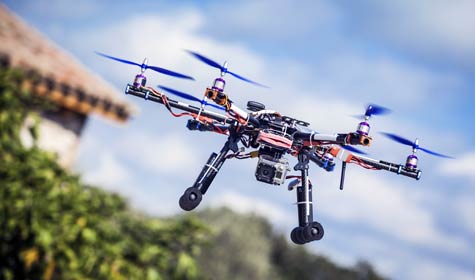One question that underlies much of what is discussed in the telecommunications and IT world is whether the end game is a world of unemployed people. When will IBM Watson and other cognitive computing platforms evolve to the point that they make analysts unnecessary? When will robots become so sophisticated that all the nurses and home health care givers will be out of work? When will drones replace the neighborhood ice cream truck?
These are important questions, but ones that are not strictly limited to the IT/telecom realm. After all, engineers make the weapons. Politicians, legislators and administrators decide how to use them.
These are becoming real issues, however, for IT and telecom. DarkReading analyst Danny Dicks posted a commentary on drones that starts with a scenario illustrating the threat using the example of land surveyors. That business, if regulations changed to a certain extent, could be run largely without human intervention very soon. The key is that the technology is there. The laws are the limiting factor:
The only thing preventing more use and development of drones for these types of applications at the moment is regulation restricting the autonomous flight without a line-of-sight (LoS) “pilot.” That requirement significantly reduces the economic case for the use of drones and prevents the development and deployment of systems to manage fleets of drones for an individual owner or more widely across specific airspace.
Dicks adds that the Federal Aviation Administration (FAA) regulations demanding LoS operations only are in draft status, but they could change. Even if they don’t, though, other nations could be less restrictive. And once money saving technology is available, it finds a way to gain traction.
The wide-scale use of drones and robots is very near. Federal Times reports that The Postal Service has prequalified a bidder, Workhorse Group, which offers an electric truck that can launch drones. The idea is that the drone will deliver packages while the carrier walks his or her normal route.
The device is being developed by the company in conjunction with the University of Cincinnati. It weighs about 15 pounds and can carry a 10-pound package in an “extendable cage.” The drone can reach 50 MPH, but will stay at about 35 MPH most of the time.
Another example of the use of drones to replace humans is in disaster response scenarios which, by the way, is an area also being looked at by robotics companies. The group Measure sounded out the American Red Cross about partnering, and it in turn suggested a study to provide data on how drone technology could be used. Not surprisingly, the possible advantages are great:
Drones outfitted with cameras can broadcast a live video feed to emergency workers, providing them a better understanding of their circumstances. This provides many benefits such as knowing where is safe to set-up their operations. Survivors can be located. The levels of flood waters can be tracked. Supplies, provided they aren’t too heavy, can be delivered.
The Red Cross has decided to not jump into the drone arena yet. It has regulatory concerns and worries about the negative public attitude toward drones. That’s a big worry for an organization that relies on donations.
Both of these examples are exemplary: Saving the beleaguered U.S. Postal Service some money and getting information to the right people in emergencies are laudable goals, of course.
The road to massive change in how people work often starts with implementations with which no reasonable person would have a problem. That figures to be especially true with drones, which have started with a public relations deficit. It also is clear that the only things really stopping drones from becoming commonplace are rules and regulations that inevitably will fall away.
The prudent thing is to remember that there are costs associated with the new technology, in terms of jobs held by real humans.
Carl Weinschenk covers telecom for IT Business Edge. He writes about wireless technology, disaster recovery/business continuity, cellular services, the Internet of Things, machine-to-machine communications and other emerging technologies and platforms. He also covers net neutrality and related regulatory issues. Weinschenk has written about the phone companies, cable operators and related companies for decades and is senior editor of Broadband Technology Report. He can be reached at [email protected] and via twitter at @DailyMusicBrk.




